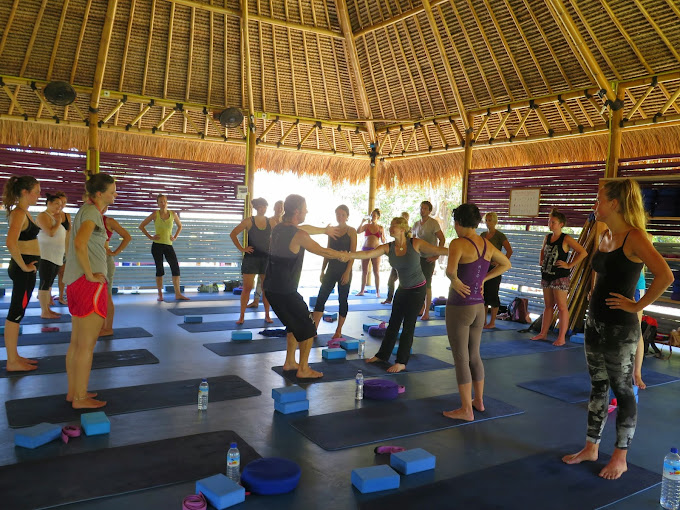Rhinoplasty, also known as a nose job, is a popular cosmetic surgical procedure that reshapes or repairs the nose. It can be performed for a variety of reasons, including improving the aesthetic appearance of the nose, correcting structural issues such as a deviated septum, or enhancing overall facial symmetry. Despite the widespread popularity of the procedure, many people who undergo rhinoplasty wonder: how long does rhinoplasty take to heal?
The healing process following Rhinoplasty in Dubai varies from person to person and can depend on several factors such as the complexity of the surgery, the individual’s health status, and the specific surgical technique used. While most patients see significant recovery within a few months, the full healing process can take up to a year or even longer. In this article, we will explore the timeline for rhinoplasty recovery, key factors that influence healing, and offer useful tips for a smooth recovery journey.
Understanding Rhinoplasty and Its Healing Process
Rhinoplasty involves surgical alterations to the nose to improve its appearance, function, or both. The procedure can be performed using two main techniques: open rhinoplasty and closed rhinoplasty. Open rhinoplasty involves making an incision across the columella (the tissue between the nostrils), allowing the surgeon to have better access to the nasal structure. Closed rhinoplasty, on the other hand, involves incisions made inside the nostrils, leaving no visible external scars. The complexity of the surgery will determine how long it takes for the nose to heal.
After the procedure, it’s important to have a good understanding of the healing process and follow post-operative care instructions carefully to ensure the best results. This includes avoiding certain activities, taking prescribed medications, and being patient as the swelling and bruising gradually subside. While the external swelling and bruising are the most obvious signs of recovery, the internal healing of the nasal tissues is just as important.
Rhinoplasty Healing Timeline
The healing process after rhinoplasty is gradual and occurs in several stages. While everyone’s healing time can vary, the general timeline outlined below can help give you an idea of what to expect after surgery.
Week 1: Immediate Post-Operative Recovery
The first week following rhinoplasty is typically the most challenging in terms of recovery. During this period, patients will experience significant swelling, bruising, and discomfort. It is crucial to follow your surgeon’s instructions carefully during the initial recovery phase.
- Swelling and Bruising: Swelling will be most noticeable in the first 48 hours after the procedure. Bruising around the eyes, cheeks, and nose is also common. This swelling should gradually improve as the days go by, but you may still notice residual swelling in the nasal area.
- Nasal Splints and Packing: If your surgeon used nasal splints or packing, they will typically be removed within the first week. The splints help stabilize the nose after surgery, while the packing is used to control bleeding and support internal healing.
- Rest and Care: Rest is crucial during the first week. Patients should avoid strenuous activities, keep their head elevated while sleeping, and refrain from touching or rubbing their nose. It’s also important to avoid blowing your nose, as this could disrupt the healing process.
Week 2: Reducing Swelling and Initial Recovery
By the second week, the swelling and bruising should begin to subside significantly. Many patients are able to return to work or engage in light activities, though they may still experience some discomfort.
- Visible Swelling: While much of the swelling will have gone down, it’s normal to still see some puffiness in the nose and surrounding areas. The skin on the nose may still feel tight or numb, but this sensation should gradually improve over time.
- Follow-up Appointment: During this stage, you’ll have a follow-up appointment with your surgeon. This is an important time to discuss any concerns you may have and ensure that you are healing properly. Your surgeon will also assess whether the internal splints or packing need to be removed.
Month 1: Significant Healing
By the end of the first month, most of the swelling and bruising should have decreased, but the nose will still need time to heal fully. You’ll likely be feeling more comfortable and may return to your normal routine, but there are still some restrictions to be aware of.
- Reduced Swelling: Although the majority of the swelling will have gone down by this time, residual swelling can persist, particularly at the tip of the nose. The tip of the nose is often the slowest part to heal and may still appear slightly swollen.
- Resuming Activities: Most patients can return to regular activities at this point, but they should avoid any heavy lifting, intense exercise, or activities that could risk injury to the nose. Wearing protective gear such as sunglasses should also be avoided during this time.
Month 3 to 6: Final Stages of External Healing
During the next few months, your nose will continue to heal, with most of the external swelling disappearing by around the three-month mark. However, some residual swelling may still remain.
- Gradual Refinement of Nose Shape: As the swelling decreases, the final shape of your nose will become more visible. Your nose will continue to settle into its new shape, but it will still take time for the tissues to fully adjust.
- Scarring: If you had open rhinoplasty, there may be a small scar along the columella. This scar will usually fade over time and become less noticeable, but it can take several months to a year for it to heal fully.
Month 6 to 12: Full Healing
While you may see significant improvements in the shape of your nose during the first three to six months, full healing continues up to a year. The internal structures of the nose, including cartilage and bone, are still undergoing gradual changes and refinement.
- Final Results: It can take up to a year for your nose to fully settle into its final shape. Swelling will continue to decrease, and the skin will gradually mold to the underlying structure.
- Residual Swelling: Even at the one-year mark, some patients may experience slight, lingering swelling, particularly at the nasal tip. This is normal and generally resolves over time.
Rhinoplasty Healing Timeline
| Healing Stage | Key Characteristics |
|---|---|
| Week 1 | Significant swelling, bruising, and discomfort; nasal splints or packing may be used. |
| Week 2 | Swelling begins to subside; bruising improves; follow-up appointment with the surgeon. |
| Month 1 | Majority of swelling decreases; residual swelling may remain in the nasal tip. |
| Month 3 to 6 | Swelling continues to reduce; nose shape begins to refine, but residual swelling may persist. |
| Month 6 to 12 | Final results begin to take shape; residual swelling may still be visible. |
| One Year | Full recovery and final results achieved; residual swelling completely resolves. |
Factors Influencing Rhinoplasty Healing
The duration and quality of rhinoplasty healing can vary significantly depending on several factors. These factors can include the surgical technique used, the patient’s overall health, and their adherence to post-operative care instructions. Understanding these factors can help you prepare for the healing process and set realistic expectations.
Surgical Technique
The technique used for rhinoplasty plays a significant role in the recovery process. Open rhinoplasty typically requires a longer recovery time because the incisions are made on the outside of the nose, which means there is more tissue disruption. Closed rhinoplasty, which involves incisions inside the nostrils, generally results in a quicker recovery with fewer visible scars.
Patient Health and Lifestyle
A patient’s overall health can have a significant impact on the healing process. People who are in good physical condition and follow healthy lifestyle practices, such as avoiding smoking and maintaining a balanced diet, generally experience faster and more efficient healing. Smoking, in particular, can delay healing by restricting blood flow and impairing the body’s ability to heal tissues.
Age and Skin Type
Age and skin type also influence the healing process. Younger patients often heal more quickly than older individuals and patients with thinner skin tend to recover more efficiently than those with thicker skin. Skin type and tone can also affect the final appearance of the nose, as thicker skin may result in a slightly less refined shape.
Tips for a Smooth Rhinoplasty Recovery
- Follow Post-Operative Instructions: Your surgeon will provide specific instructions on how to care for your nose after surgery. This includes guidance on pain management, how to clean your nose, and when you can return to normal activities.
- Keep Your Head Elevated: Keeping your head elevated, especially while sleeping, can help reduce swelling. Use extra pillows to support your head at a 30-degree angle.
- Avoid Strenuous Activities: Avoid vigorous exercise and heavy lifting for several weeks to prevent unnecessary strain on your healing nose. Follow your surgeon’s timeline for gradually returning to normal activities.
- Wear Sun Protection: Protect your nose from the sun during the healing process, as UV exposure can darken scars or affect the appearance of your nose. Use sunscreen or wear a wide-brimmed hat to shield your face from the sun.
FAQ’s:
How long does it take for the swelling to go down after rhinoplasty?
The majority of swelling usually subsides within the first 2-3 weeks after surgery. However, residual swelling can persist for several months, with the final results becoming visible after about a year.
Is rhinoplasty recovery painful?
While rhinoplasty involves some discomfort, most patients report that the pain is manageable with prescribed medication. Swelling and bruising are more noticeable than actual pain.
When can I return to work after rhinoplasty?
Most patients can return to work or school after 1-2 weeks, depending on their recovery. However, you should avoid strenuous activities for several weeks.
Will my nose be completely healed after one year?
Full healing takes about a year, during which time the nose continues to settle into its final shape. Some minor swelling may remain at the tip of the nose for up to a year.
Can I resume exercise after rhinoplasty?
You should avoid heavy exercise or strenuous activities for at least 4-6 weeks after rhinoplasty to ensure proper healing. Light activities can usually be resumed sooner.
Are there any risks of complications during healing?
While complications are rare, potential risks include infection, bleeding, scarring, or breathing difficulties. Following your surgeon’s instructions and attending follow-up appointments can help minimize these risks.
Conclusion
Rhinoplasty is a transformative procedure, but the healing process can take time. While most patients begin to see noticeable improvements within the first few months, full recovery typically takes up to a year. It is important to understand the timeline for healing, follow your surgeon’s post-operative care instructions, and be patient as your nose continues to refine itself. With proper care and realistic expectations, the results of rhinoplasty can be long-lasting, enhancing both the appearance and functionality of the nose.



